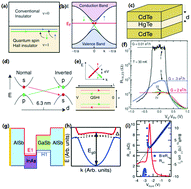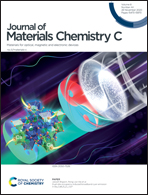Recent development and advances in Photodetectors based on two-dimensional topological insulators
Abstract
Photodetectors are optoelectronic devices with excellent photoelectric conversion abilities. They have especially important applications in many fields, such as image sensing, video imaging, optical communications, aerospace, environmental detection, and military safety. Since the advent of graphene in 2004, scientists have been keen on the study of 2D materials. 2D materials have excellent physical, chemical, thermal, magnetic, electronic, and optical properties, which allow them to be widely used in the field of photodetectors. Recently, due to their many excellent properties, topological insulators (TIs), a class of novel 2D quantum material, have attracted much attention from scientists. TIs are promising layered materials with quantum properties. In bulk form, they have insulating band gaps and gapless conductive edge states or surface states, protected by time-reversal symmetry caused by robust spin–orbit coupling effects. This special energy band structure enables a weakening of the backscattering effect during electron transport, and thus they have extremely high carrier mobilities. At the same time, TIs have gapless edge states or surface states, linear band dispersion relationships, and good flexibility and mechanical properties, and they have especially important application prospects in high-performance broadband photodetectors with high sensitivity and in wearable flexible devices. In addition, TIs have excellent transparency, electrical conductivity, and environmental stability, and have great potential for use in the preparation of electrodes for photodetectors. Examining novel TI materials, this paper reviews the latest research progress relating to TI photodetectors. Firstly, the types and properties of TIs are introduced in detail. Secondly, common TI preparation methods are elaborated on, and then the applications of TIs in photodetectors are emphasized. Finally, the present challenges relating to TIs are summarized, and future development directions are given, providing some feasible guidance for the preparation of novel high-performance TI photodetectors.

- This article is part of the themed collection: Journal of Materials Chemistry C Recent Review Articles


 Please wait while we load your content...
Please wait while we load your content...